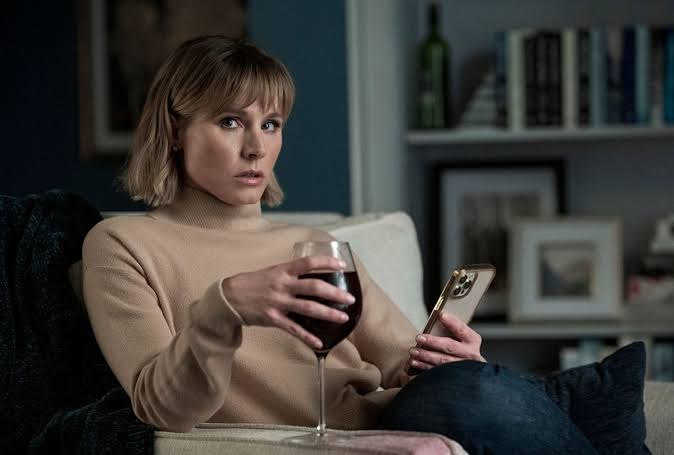
Woman in the house across the street – What this show is about?
Netflix has been enjoying the success of its new show that has such a long title I can’t even fit it into a headline, The Woman in the House Across The Street From The Girl In The Window, the Kristen Bell thriller parody that many viewers don’t exactly seem to realize is a parody.
The Woman in the House has fended off All of Us Are Dead and passed up Ozark, but it has now lost its #1 spot in Netflix’s top 10 list to a potentially surprising offering, Raising Dion season 2.
The Woman in the House proceeds sedately over the course of eight episodes, with only the occasional dash of broad comedy, like when the main character, Anna (Kristen Bell), fills her balloon goblet to the brim with red wine and slurps from it next to an enormous salad bowl overflowing with old corks. Plenty of viewers will find themselves wondering whether this is a spoof of the genre or a specimen of it.
Does it work? Mostly yes,the eighth and final episode of The Woman in the House made it worthwhile for this viewer, someone all too familiar with the domestic thriller’s conventions. The series appears to be the work of people who have read dozens of these books and the scripts based on them, looking for candidates for adaptation. Throughout the series, Anna browses through novels whose plots resemble the story she’s trapped inside, each one with a title that obliquely references an actual bestselling book. The people responsible for the show, for better and for worse, know their domestic thrillers inside out. Unfortunately, some of their best jokes will only be noticed (let alone appreciated) by other grizzled veterans.
It helps to understand what makes all these Woman/Girl thrillers tick. This particular subgenre launched with Paula Hawkins’ 2015 blockbuster novel, The Girl on the Train, and reached its apotheosis three years later with A.J. Finn’s The Woman in the Window, an extremely calculated exercise in what had by then become a well-established formula. In the classic premise, an isolated middle-class woman—almost always white—who feels that her life has been broken spends too much time voyeurizing people with apparently perfect lives. But one day, as she watches, she witnesses a woman murdered. When she tries to report this crime to various authority figures, ranging from the police to her therapist, no one believes her because she drinks too much, takes mood-stabilizing medication, and has a history of mental instability. Eventually, she even comes to doubt herself, but in the end, after several twists, she is proved right.
It’s no surprise that so many hits were reliably produced using this formula. It speaks to a stew of anxieties underlying middle-class femininity, from the obsession with surface appearances of domestic perfection and with the ugly secrets lurking behind such facades to a (frankly justifiable) frustration at not being believed when trying to expose those secrets.







